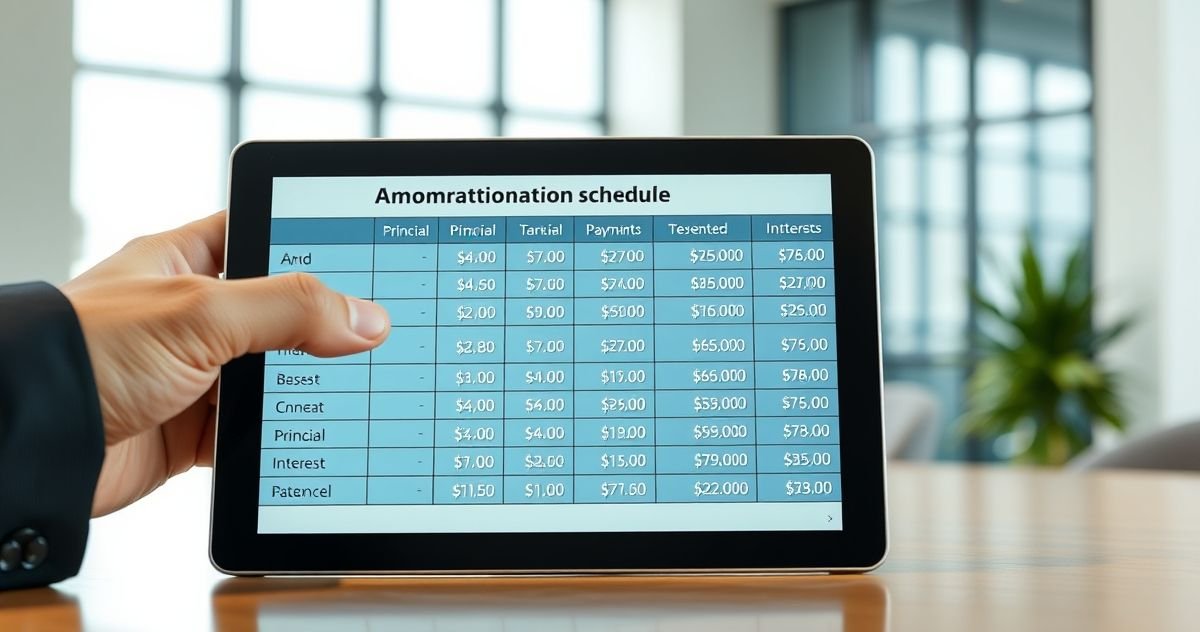What is an Amortization Schedule?
Definition:
An amortization schedule is a comprehensive table detailing each periodic payment on an amortizing loan, such as a mortgage or auto loan. It breaks down each payment into the amount applied to the principal balance and the amount applied to interest, along with the remaining loan balance after each payment.
Breaking Down Your Loan Payments: A Look at Amortization Schedules
Ever wondered where all your money goes when you make a loan payment? It’s not as simple as just tossing cash at a debt. For loans like mortgages, car loans, or even some personal loans, each payment is split between paying down the actual amount you borrowed (the principal) and paying the cost of borrowing that money (the interest). An amortization schedule is your financial roadmap for this process.
What Exactly is Amortization?
Before diving into the schedule, let’s get a handle on amortization itself. It’s the process of paying off a debt over time in regular, equal payments. Each payment you make gradually reduces the loan’s principal balance. The magic of amortization is how the balance between principal and interest payments shifts over time.
How Does an Amortization Schedule Work?
Think of an amortization schedule as a super-detailed receipt for your loan payments. It typically includes:
- Payment Number: Simply counting each payment from 1 to the total number of payments.
- Payment Amount: The fixed amount you pay each period.
- Interest Paid: The portion of the payment that covers the interest accrued since the last payment.
- Principal Paid: The portion of the payment that goes directly to reducing the loan balance.
- Remaining Balance: The amount of debt left after that specific payment is made.
Early in the loan term, a larger portion of your payment goes towards interest. As you continue to make payments, more of each payment starts chipping away at the principal. This is because interest is calculated on the outstanding balance – so as the balance decreases, the interest due also decreases.
Real-World Examples
- Mortgage: When you take out a mortgage, your monthly payment includes both interest and principal. An amortization schedule for your mortgage would show how, over 30 years, the interest portion of your payment decreases while the principal portion increases, until you finally own your home outright.
- Car Loan: Similarly, your monthly car payment is amortized. Initially, a big chunk covers interest, but as you pay down the loan, more goes towards the car itself.
- Student Loans: Most student loans are also amortized, with schedules that detail how each payment reduces both interest and the amount borrowed.
Who Needs to Understand Amortization Schedules?
Anyone with an amortizing loan should be familiar with their amortization schedule. This includes:
- Homebuyers: To understand how their mortgage payments work and how equity builds over time.
- Car Owners: To track their progress in paying off their vehicle.
- Students: To manage their student loan debt effectively.
- Small Business Owners: When taking out loans for equipment or operations.
Tips and Strategies
- Review Regularly: Look at your schedule periodically to see your progress and understand how your payments are allocated.
- Consider Extra Payments: Making extra payments, especially early in the loan term, can significantly accelerate the payoff of your principal and save you a lot on interest over the life of the loan. Even a small extra amount can make a difference.
- Use Online Calculators: Many websites offer amortization calculators where you can input your loan details to generate a personalized schedule. This is a great way to play with different payment scenarios.
Common Misconceptions
- “My payments are always the same, so the interest and principal portions must be the same too.” Not true! In a standard amortizing loan, the interest portion starts high and decreases, while the principal portion starts low and increases.
- “Paying extra doesn’t matter if it’s late in the loan.” While paying extra early has the biggest impact on interest savings, any extra principal payment will always reduce your balance faster and save you some interest.
